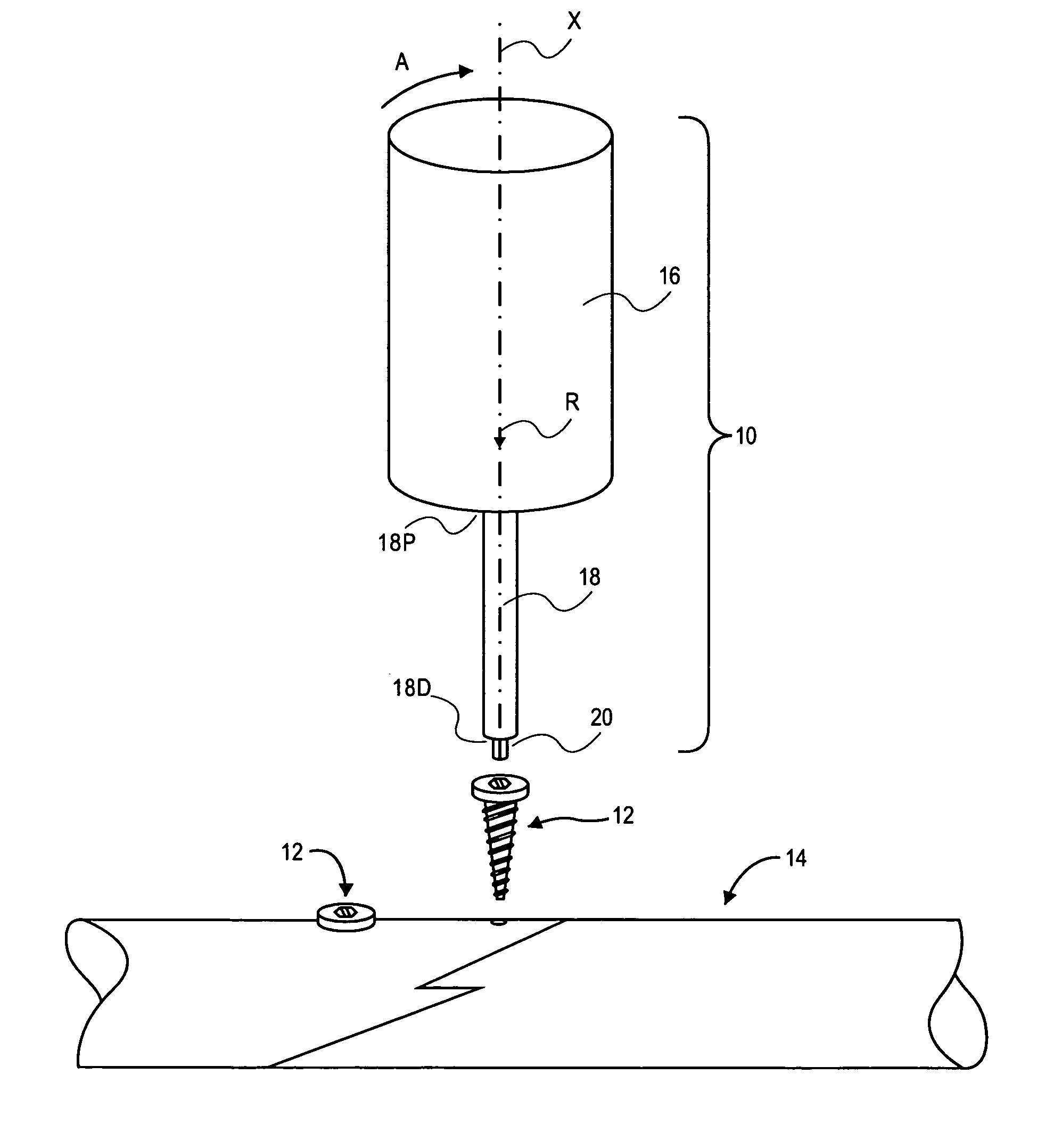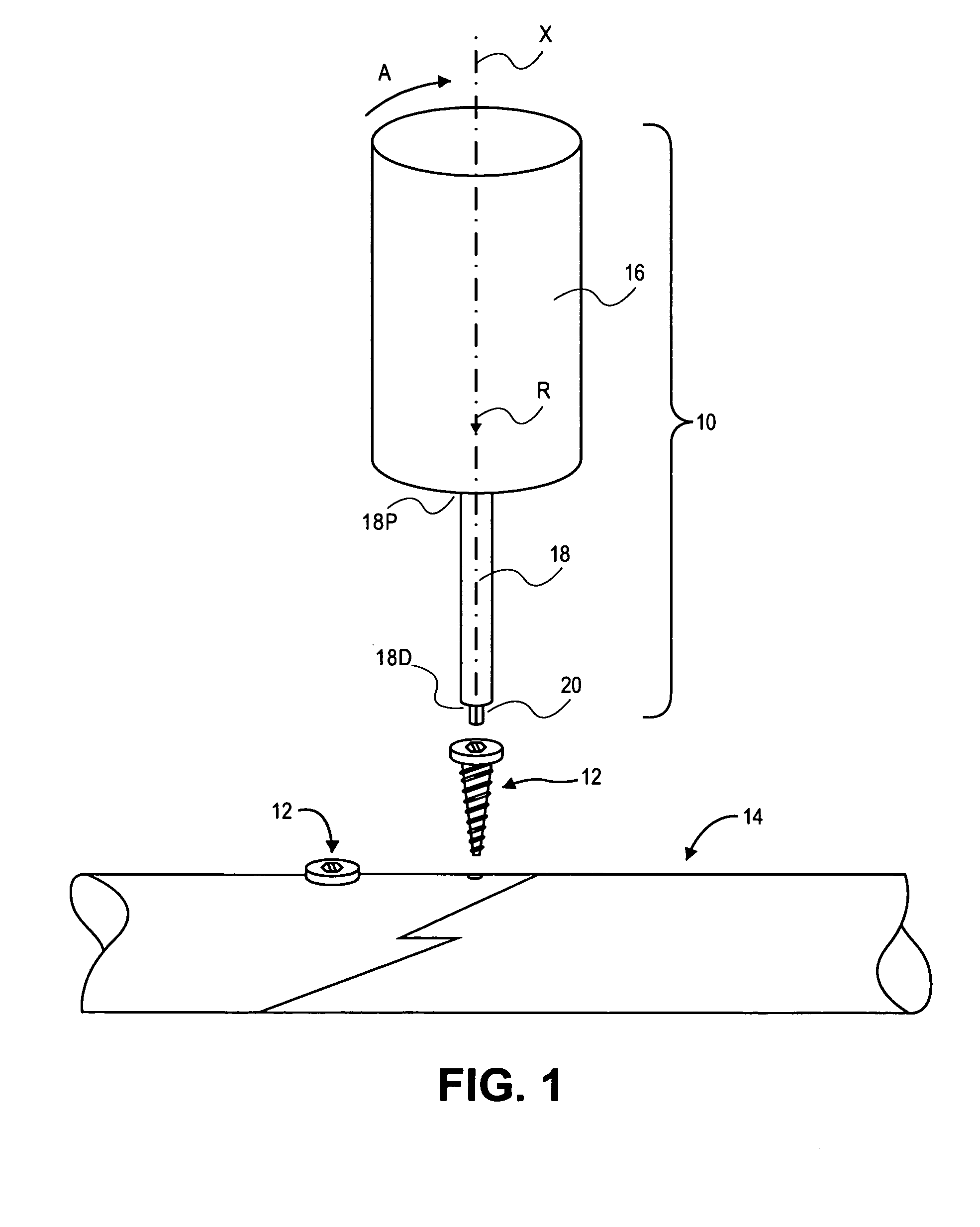Magnetic torque-limiting device and method
a torque-limiting device and magnetic technology, applied in the direction of osteosynthesis devices, application, slip coupling, etc., can solve the problems of shock waves along the tool axis and into the fastener, wear and tear may alter the torque setting of the conventional torque-limiting device,
- Summary
- Abstract
- Description
- Claims
- Application Information
AI Technical Summary
Benefits of technology
Problems solved by technology
Method used
Image
Examples
Embodiment Construction
[0045]The present invention provides a magnetic torque-limiting device and method. A detailed description of the magnetic method utilized in the preferred embodiment will clarify the understanding of the phenomenon of magnetic coupling and the magnetic circuit that is created in the preferred embodiment. The individual magnets are made from a rare earth material, such as Samarium Cobalt, SmCo, or Neodymium Iron Boron NdFeB, the former being preferred over the later. NdFeB, due to its iron component, will rust, SmCo contains no iron and will not rust. The shaft and tube are made from a magnetically conductive stainless steel, such as T410 SmIs Annealed or similar magnetically conductive materials. The shaft assembly includes magnets connected to the shaft. They are arranged so that the separate magnetic elements, i.e. the magnets are in a mutually magnetically attractive arrangement. The magnetic lines of force pass from one magnet, through the shaft and into the adjacent magnet; opp...
PUM
 Login to View More
Login to View More Abstract
Description
Claims
Application Information
 Login to View More
Login to View More - R&D
- Intellectual Property
- Life Sciences
- Materials
- Tech Scout
- Unparalleled Data Quality
- Higher Quality Content
- 60% Fewer Hallucinations
Browse by: Latest US Patents, China's latest patents, Technical Efficacy Thesaurus, Application Domain, Technology Topic, Popular Technical Reports.
© 2025 PatSnap. All rights reserved.Legal|Privacy policy|Modern Slavery Act Transparency Statement|Sitemap|About US| Contact US: help@patsnap.com



